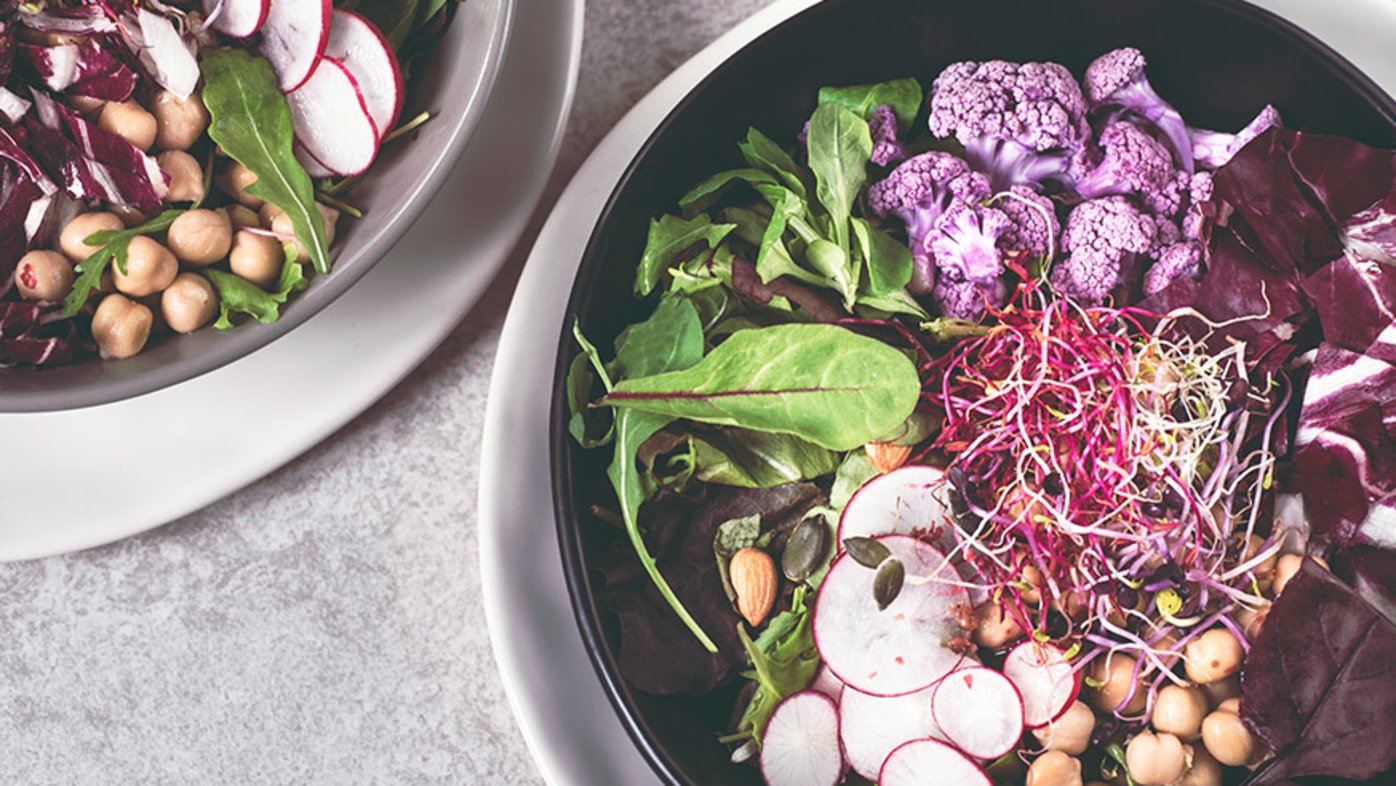
The benefits of a whole-food, plant-based diet
Moving to a plant-based diet is easier than you think — and it comes with a bevy of benefits.
Getting enough protein in your diet is essential to good health. It helps you build strength and muscle, and recover from injury. It also helps you feel full, which can aid in weight loss. But how much protein is enough? And is there a risk of getting too much?
“As a rule of thumb, the recommended dietary allowance (RDA) for protein is 0.36 grams per pound,” says Lindsay Yau, a registered dietitian nutritionist and wellness education specialist at Sharp Rees-Stealy Medical Centers. “That averages to about 46 grams of protein for sedentary women, and 56 grams of protein for sedentary men.”
However, an individual’s needs will vary based on a number of factors, including body weight, age, muscle mass, activity level and current health. The RDA is the average amount of protein needed to meet nutrient requirements for nearly all healthy people.
People who exercise more will need more protein. The amount depends on the length, frequency and intensity of that exercise. If you’re someone who exercises a few times a week, such as taking a spin class or lifting weights, an extra 20 grams of protein per day could help the body recover and repair muscle.
The good news is — for most people — getting enough protein isn’t too difficult:
A small, 3-ounce piece of meat has about 21 grams of protein. Be sure to choose meats that are lower in saturated fat and cholesterol. Plant proteins, leaner cuts of poultry and fatty fish are your best bet.
One 8-ounce container of yogurt has about 11 grams of protein.
One cup of milk has 8 grams of protein.
One cup of cooked beans has about 14 grams of protein.
Quinoa, legumes, tofu and nuts are great sources of plant-based protein for vegetarians and vegans. By making sure you have heart-healthy, protein-rich food on your plate at each of your meals, you should be well on your way to reaching your ideal protein intake.
Some people turn to protein supplements — ready-to-drink shakes, bars, gels and powders — to increase their protein intake. But if you are a healthy, active adult, you should be able to meet your protein needs with whole foods from your regular diet.
Although there is a risk of eating too much protein, this risk typically applies to those with kidney and liver disease. The risk that applies to most people is simply discarding other food groups, such as fruits, vegetables and whole grains, in favor of protein. As with most things in life, balance is key.
Our weekly email brings you the latest health tips, recipes and stories.